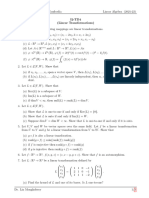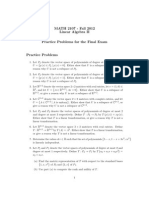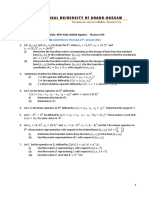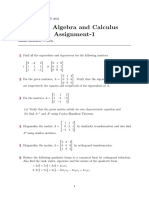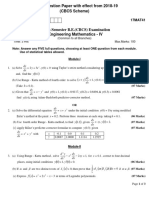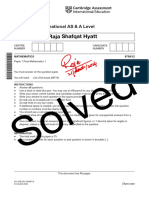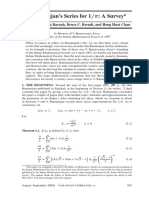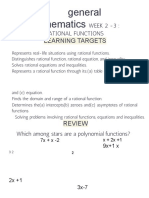0% found this document useful (0 votes)
31 views2 pagesTask 2
This document outlines Assignment 2 for a Linear Algebra course, with a submission deadline of September 15, 2025. It includes various problems related to linear transformations, such as identifying non-linear transformations, calculating range space, rank, kernel, and nullity, as well as finding matrix representations and dual bases. The assignment covers transformations in different vector spaces and provides specific tasks for students to complete.
Uploaded by
deepranjan KalitaCopyright
© © All Rights Reserved
We take content rights seriously. If you suspect this is your content, claim it here.
Available Formats
Download as PDF, TXT or read online on Scribd
0% found this document useful (0 votes)
31 views2 pagesTask 2
This document outlines Assignment 2 for a Linear Algebra course, with a submission deadline of September 15, 2025. It includes various problems related to linear transformations, such as identifying non-linear transformations, calculating range space, rank, kernel, and nullity, as well as finding matrix representations and dual bases. The assignment covers transformations in different vector spaces and provides specific tasks for students to complete.
Uploaded by
deepranjan KalitaCopyright
© © All Rights Reserved
We take content rights seriously. If you suspect this is your content, claim it here.
Available Formats
Download as PDF, TXT or read online on Scribd
/ 2























